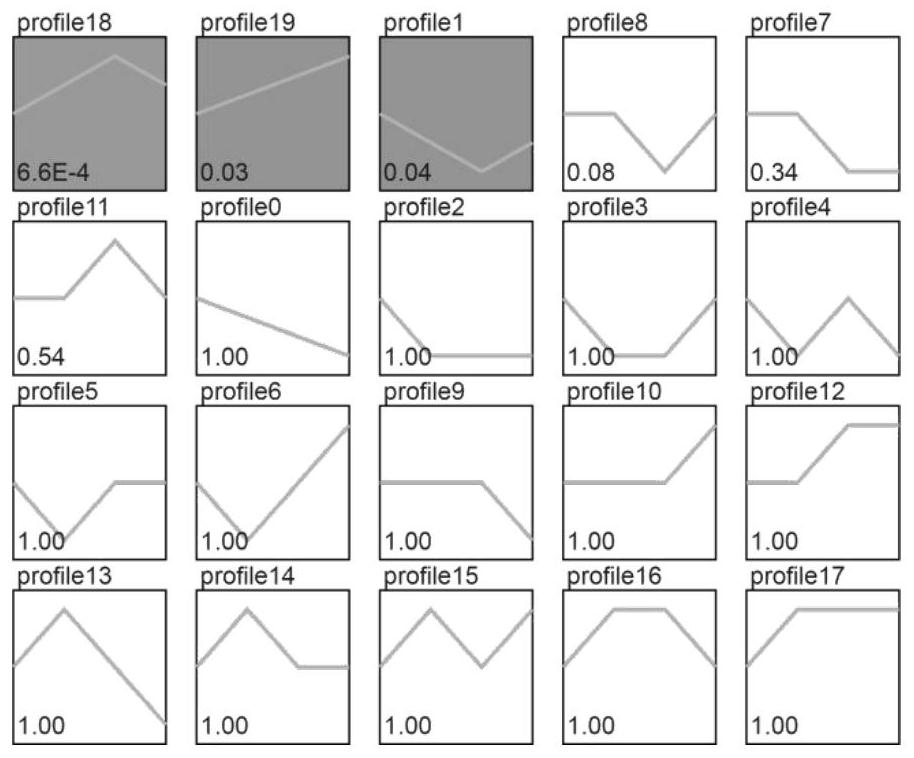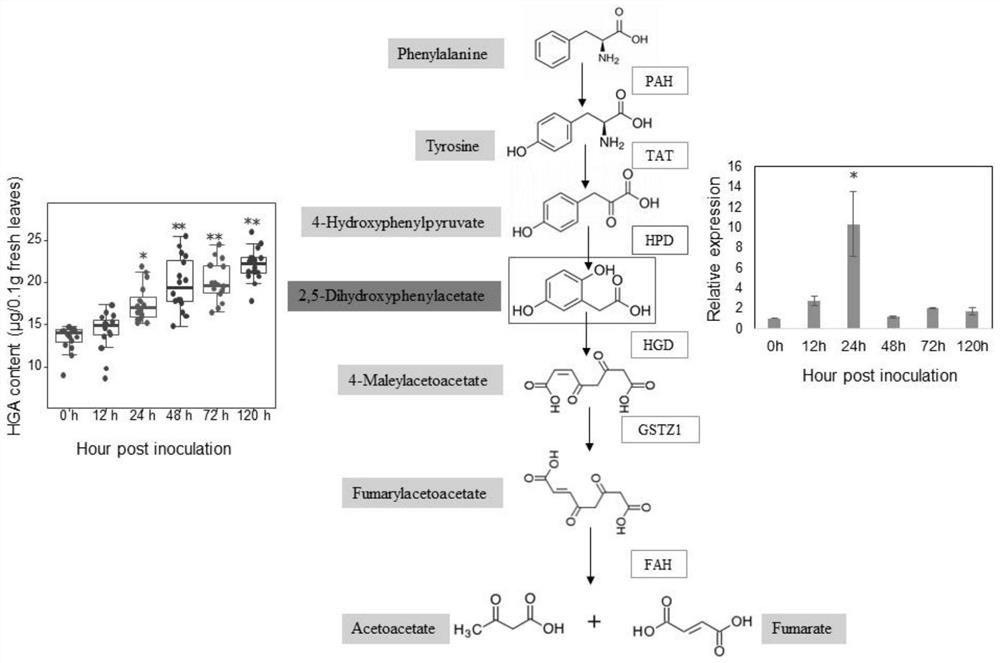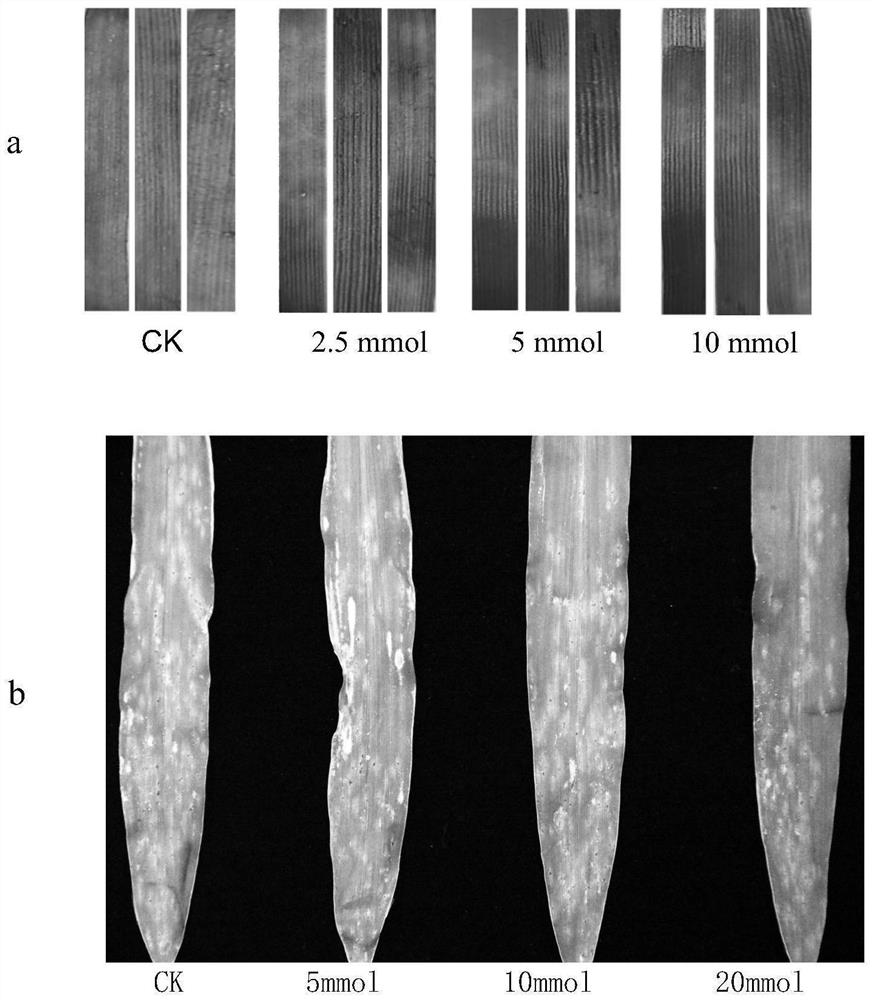Wheat stripe rust resistance related metabolite as well as synthesis related gene and application thereof
A technology related to wheat stripe rust and resistance is applied in the field of plant genetic engineering, which can solve the problems of loss of stripe rust resistance, population destruction, and wheat yield reduction of main wheat varieties, and achieve green prevention and control of wheat stripe rust and corn rust. The effect of germination and ability improvement
- Summary
- Abstract
- Description
- Claims
- Application Information
AI Technical Summary
Problems solved by technology
Method used
Image
Examples
Embodiment 1
[0027] Example 1 Analysis of metabolites after stripe rust fungus CYR23 infects wheat
[0028] (1) Material handling
[0029] Disinfect the wheat seeds of Suwon11 (Suwon11) with 75% alcohol, wash them with ultrapure water 4-5 times, soak the seeds to accelerate germination, sow them in a nutrient bowl, and cultivate them in an environment of 12°C±2°C until the wheat seedlings grow to the 1-leaf stage At the same time, the physiological race CYR23 of stripe rust was smeared on the leaves, kept moist for 24 hours in the dark, and the normal growing wheat was used as the control CK. The samples were collected at 12h, 24h, and 48h after inoculation.
[0030] (2) Detection of metabolites by ultra-high performance liquid chromatography and tandem mass spectrometry
[0031]The metabolites of the materials obtained in step (1) were detected by ultra-high performance liquid chromatography and tandem mass spectrometry. The specific operation method is: S1, Standards and reagents, all...
Embodiment 2
[0033] Anti-stripe rust experiment after embodiment 2HGA foliar spraying of wheat and corn
[0034] (1) Material cultivation
[0035] Disinfect the wheat seeds of Shuiyuan 11 with 75% alcohol, wash them with ultrapure water 4-5 times, soak the seeds to accelerate germination, sow them in a nutrient bowl, and cultivate them in a greenhouse at 12°C±2°C, with 16 hours of light and 8 hours of darkness. After disinfecting the corn seeds with 75% alcohol, wash them with ultrapure water 4-5 times, soak the seeds to accelerate germination, sow them in a nutrient bowl, and cultivate them in a greenhouse at 25°C±2°C with 16 hours of light and 8 hours of darkness.
[0036] (2) Material handling
[0037] Spray HGA solutions with concentrations of 2.5mmol, 5mmol, and 10mmol on the leaves of wheat respectively. Each treatment is repeated 3 times. The control group CK is not sprayed. After 12 days, the degree of disease on the wheat leaves was observed.
[0038] Spray HGA solutions with a...
Embodiment 3
[0040] Embodiment 3 HGA is to the influence experiment of wheat stripe rust spore and common rust spore germination rate of corn
[0041] Prepare HGA solutions with concentrations of 1mmol / L, 2mmol / L, 5mmol / L, and 10mmol / L respectively. Take a clean glass slide, add a drop of the above-mentioned HGA solution of different concentrations, and add a drop of distilled water to the control group CK, pick a small amount of stripe rust spores with a dissecting needle and place them in the above-mentioned solutions of different concentrations and distilled water respectively. Adjust the spore concentration under the microscope, about 40-60 spores / field of vision. Place the slides in a petri dish lined with absorbent paper, and then culture them in an incubator at 12°C±2°C. After 24 hours, it was taken out for observation, and each treatment was repeated 3 times. The corn rust spore inhibition experiment method was the same as above, and the culture temperature was 20°C±2°C.
[0042]...
PUM
 Login to View More
Login to View More Abstract
Description
Claims
Application Information
 Login to View More
Login to View More - R&D
- Intellectual Property
- Life Sciences
- Materials
- Tech Scout
- Unparalleled Data Quality
- Higher Quality Content
- 60% Fewer Hallucinations
Browse by: Latest US Patents, China's latest patents, Technical Efficacy Thesaurus, Application Domain, Technology Topic, Popular Technical Reports.
© 2025 PatSnap. All rights reserved.Legal|Privacy policy|Modern Slavery Act Transparency Statement|Sitemap|About US| Contact US: help@patsnap.com



